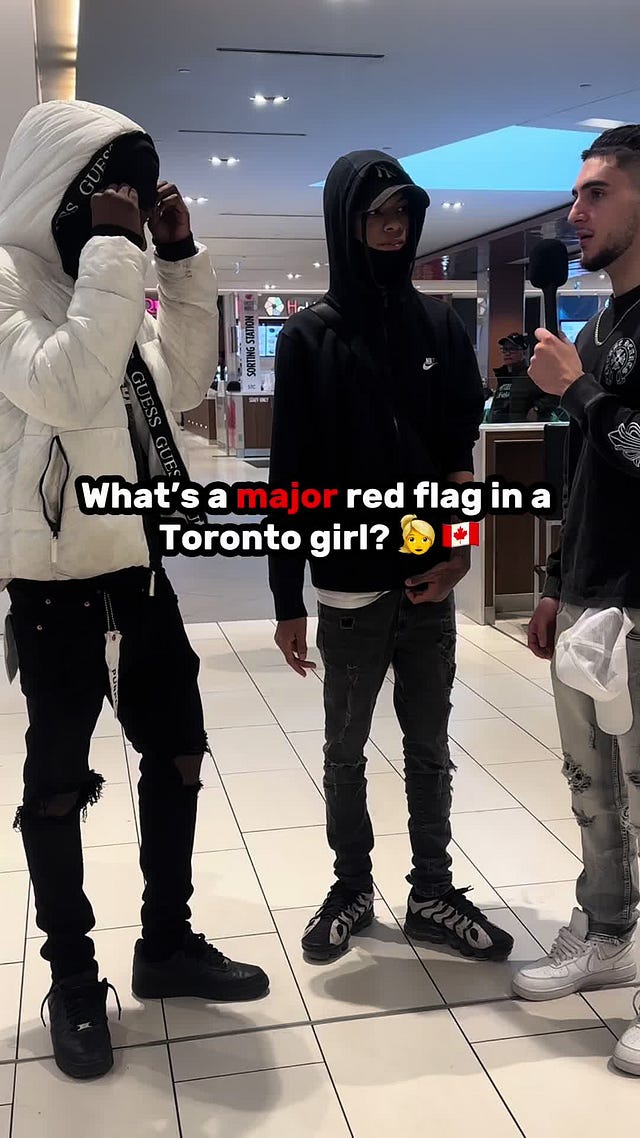Figures from the Post-Place Culture
Global homogenisation has its own class structure
At the risk of stating the obvious, what you see online is not always what you get IRL. But enough people have now noticed the internationalisation of “multicultural” street youth / gang culture that it’s worth a few words.
A set of TikTok videos from Toronto has been doing the rounds, including this one:
 Tiktok failed to load.
Tiktok failed to load.Enable 3rd party cookies or use another browser
And as observed by the pseudonymous X poster Drukpa Kunley, who circulated the video, the Toronto clip depicts a lightly localised version of a “roadman” culture often, mistakenly, described as “multicultural” - but that is in fact increasingly homogeneous and now found across the developed world.
Here it is, for example, in Colchester, UK:
 Tiktok failed to load.
Tiktok failed to load.Enable 3rd party cookies or use another browser
Kunley isn’t the only one to have noticed this. The whole of Europe now has a word for “roadman”:
But this phenomenon isn’t just about immigration, or youth culture, or rap, or gangs. Mass broadcast media have been propagating “youth” trends for almost a century now, typically from their source in America to all points within the American cultural blast radius. Against this, the spread of “roadman” clothing, slang, and attitudes is not, or not only American. It’s distinct from the mimicry you used to see outside the USA, of US hip-hop fashion and slang. Roadman culture is, rather, an escalation in the ongoing arc of cultural de-territorialisation and homogenisation. This has now moved beyond propagating American culture, and aims to obliterate even this level of specificity, in favour of something that comes from nowhere, or perhaps everywhere. Or, arguably, most of all from that phenomenon Paul Kingsnorth calls “the Machine”.
Elsewhere I’ve called this sensibility the “nomos of the airport”: a maximally frictionless and transnational mode of existence that constructs all its inhabitants as all potentially belonging anywhere. And this underlines an important point: though I began this post with videos documenting a street-culture version of transnational cultural flattening, it’s a comforting error to treat it merely as a phenomenon of young people, gangs, poverty, or specific ethnic subgroups.
The “roadman” phenomenon is indeed bound up in the mass migration of subaltern populations, to do low-wage, low-skilled work. But it’s also bound up ideologically in the nomos of the airport, in the sense that the roadman is just one of the post-place cultural archetypes this creates. There are many more, and these add up to a self-contained class structure with its own aligned interests as well as internal conflicts. And even as this placeless transculture seems on the cusp of obliterating whatever is left of place and specificity, I think the “Machine” which spawned it may be about to turn round and devour its own creation.
Keep reading with a 7-day free trial
Subscribe to Mary Harrington to keep reading this post and get 7 days of free access to the full post archives.





